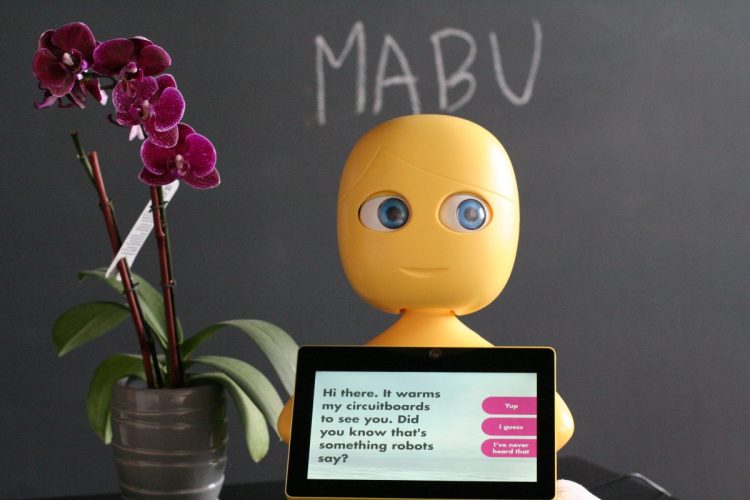Watch all the Transform 2020 sessions on-demand here.
Catalia Health today announced that it has formed a partnership with the American Heart Association (AHA) to bring AHA-approved content on heart attacks and strokes to Mabu, a personal health assistant robot working to reduce congestive heart failure patients readmission to hospitals.
Mabu is similar to robots like Pillo in that it’s designed to remind patients to take their medication, but it also offers education and tracks patient activity to better help those diagnosed with congestive heart failure.
As part of the AHA’s Center for Health Technology & Innovation’s Innovators Network, Mabu will now use heart attack and stroke data that has been collected over the years and validated by medical science.
“We have done a deal with them to be able to access all of that content. And so we’re now basically ingesting it into our platform so Mabu the robot can start using all of [it] in conversations with patients,” Catalia Health CEO Dr. Cory Kidd told VentureBeat in an interview.
June 5th: The AI Audit in NYC
Join us next week in NYC to engage with top executive leaders, delving into strategies for auditing AI models to ensure fairness, optimal performance, and ethical compliance across diverse organizations. Secure your attendance for this exclusive invite-only event.
The partnership will also lend Mabu greater credibility and help Catalia Health cobranded campaigns with the AHA give patients and hospitals a better sense of what the robot can do.
Mabu is currently being used by about a dozen congestive heart failure patients at Kaiser Permanente. Additional partner health companies are scheduled to be announced in early 2019, Kidd told VentureBeat in an interview.
Mabu stands 15 inches tall and — while not mobile — has a face and head. This was incorporated into the design because people are more likely to connect with a face, even if it isn’t human. Created following Kidd’s research at MIT Media Lab, Mabu can follow a person with its head and eye movement.
The robot also utilizes emotional intelligence AI from Affectiva, another MIT Media Lab spinoff company, to interpret human feedback and reactions from facial expressions.
The robot is particularly useful in transitional periods.
“It’s right after the discharge from that first diagnosis of heart failure,” Kidd said. “Suddenly, the patient is on a bunch of new medication, typically about five, [and is] going to change their diet. There are certain things they have to track every day.”
Like Pepper, Temi, and the Moxi hospital robot currently helping nurses in trials in Texas, Mabu is imbued with social intelligence and comes with a touchscreen that displays content, lets users take action, and allows them to follow along when the robot is speaking. The robot can also use conversational AI to listen for and respond to voice commands.
Beyond its work with congestive heart failure patients, Mabu plans to introduce more programs for patients with chronic illnesses — such as rheumatoid arthritis and late-stage kidney disease patients — by the end of the year, Kidd said.


